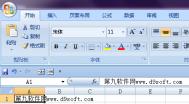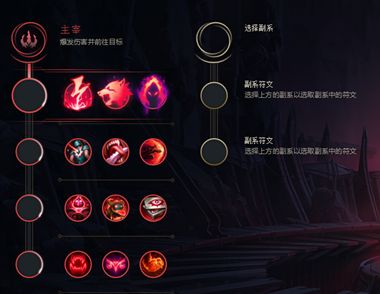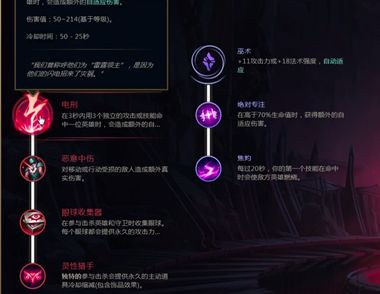最近在为学校做一个工资发放软件,要用JAVA SWING制作相应的工资表,这就涉及到多行表头及表格的合并。我足足花了3天的时间去找相关的资料,然而基本上都是E文的,而且所以例子的代码都没有注解,所以我决定将我所收集的资料整理公布出来,希望能给大家一些帮助。由于本人只是一名小学教师,水平有限,如果有什么不正确的地方,请多包涵。
(本文来源于图老师网站,更多请访问https://m.tulaoshi.com/bianchengyuyan/)废话少说,转入正题吧!
一、单元格合并。
Jtable没有提供现成的合并单元格的方法,但是使用其所提供的方法仍然能做到这一点,只是复杂了一些。为了合并单元格,我们可以使用Jtable的三个方法:getCellRect(),columnAtPoint(),and rowAtPoint()。第一个方法返回一个单元格的边界(Rectangle类),第二、三个方法分别返回屏幕指定位置的列和行。为了实现单元格合并,我们需要重载(overwrite)这三个方法。
另外,网上的资料提到,大部分的swing components 并不是直接由paint()方法来渲染(render),而是使用ComponentUI对象来完成渲染的。所以我们需要找出渲染Jtable的ComponentUI对象,并且修改它以达到我们的目的。
由于要实现多行多列单元格合并需要多个类相互协作,直接写出来的话可能比较复杂,所以我先讲一下跨列的单元格合并的方法,然后再提供一个完整的例子。
由于swing里没有可记录单元格合并情况的数据模型,所以我们需要一个新的类,它要包涵一个方法来取得单元格的所跨越的列数。另外,为了使用Jtable画(paint)起来更容易些,我们需要一个方法来确定指定单元格是否被其它单元格所覆盖,被哪个单元格覆盖。我们将这两种方法都集成在接口Cmap里:
package com.neuri.ctable;
public interface CMap
{
/**
* @参数row:指定单元格所在的逻辑行
* @参数column:指定单元格所在的逻辑列
* @返回指定单元格所跨越的列数
*/
int span (int row, int column);
/**
* @参数row:指定单元格所在的逻辑行
* @参数column:指定单元格所在的逻辑列
* @返回覆盖指定单元格的可视单元格的列值,如果单元格本来就是可视的话,返回自身的列值
*/
int visibleCell(int row, int column);
}
现在我们开始重载上面提及过的三个方法。由于我们目前只关注于跨列单元格的合并,方法rowAtPoint()就不用重载了。然而,方法columnAtPoint()就必须重载了,我们会使用Jtable自身的方法来取得指定单元格的列值,并且计算出覆盖该单元格的可视单元格列值(如果该单元格本来就是可视的,则返回自身列值)。在单元格合并后,在合并区域内只有一个跨越多列的可视单元格,其它被覆盖的单元格则不会再被渲染。当使用getCellRect()方法取得被覆盖的单元格的大小时,都返回覆盖该单元格的可视单元格的大小。
package com.neuri.ctable;
import javax.swing.*;
import javax.swing.table.*;
import java.awt.*;
public class CTable extends JTable {
public CMap map;
public CTable(CMap cmp, TableModel tbl) {
super(tbl);
map=cmp;
setUI(new CTUI());//设置Jtable的渲染UI
}
public Rectangle getCellRect(int row, int column, boolean includeSpacing){
// 该方法是Jtable构建时所必须的
if (map==null) return super.getCellRect(row,column, includeSpacing);
// 指定单元格的可视单元格列值
int sk=map.visibleCell(row,column);
Rectangle r1=super.getCellRect(row,sk,includeSpacing);
// 如果指定单元格列宽不为1,累计出跨列单元格的宽度
if (map.span(row,sk)!=1)
for (int i=1; imap.span(row,sk); i++){
r1.width+=getColumnModel().getColumn(sk+i).getWidth();
}
return r1;
}
public int columnAtPoint(Point p) {
int x=super.columnAtPoint(p);
// 当指定位置不在Table内时,返回-1
if (x0) return x;
int y=super.rowAtPoint(p);
//获取指定位置可视单元格的列值
return map.visibleCell(y,x);
}
}
现在剩下的就只有创建一个表格的渲染对象了。不同的用户接口管理器(user interface managers)使用不同的类来画表格。我们会继承子类 javax.swing.plaf.basic.BasicTableUI,并且重载其方法 paintComponent。
在组件(component)画在屏幕上之前,它已经被初始化和设定好了,所以我们能使用其内部的属性 table 和 rendererPane。属性 table 就是将要被画在屏幕的表格,rendererPane 是用于将单元格画在表格中的特殊对象。使用RendererPane的目的是打破单元格和表格的直接依赖关系,并且防止当一个单元格被修改时重画整个表。
(本文来源于图老师网站,更多请访问https://m.tulaoshi.com/bianchengyuyan/)BasicTableUI的方法getClipBounds是用于找出表格的哪一部分将会被画出来,所以我们首先要知道那些行是可视的,我们可以使用Jtable 的rowAtPoint方法。我们可以使用Rectangle类的intersects方法来确定这些行中的所以单元格是否将会被画在屏幕上。在我们画任何一个单元格前,我们必须检查一下当前单元格是否可视,如果该单元格是被其它单元格所覆盖的,就将覆盖它的单元格画出来。
根据单元格是否正在被编辑,单元格将会被方法getCellEditor或getCellRenderer所返回的对象画出来。如果你查看一下BasicTableUI的源代码,你就会发现所以单元格会先被BasicTableUI调用table.prepareRenderer画(drawn)出来,然后再被BasicTableUI调用rendererPane.paintComponent来渲染(paint)。我们会采用同样的方法。
package com.neuri.ctable;
import javax.swing.table.*;
import javax.swing.plaf.basic.*;
import java.awt.*;
import javax.swing.*;
public class CTUI extends BasicTableUI
{
public void paint(Graphics g, JComponent c) {
Rectangle r=g.getClipBounds();
int firstRow=table.rowAtPoint(new Point(0,r.y));
int lastRow=table.rowAtPoint(new Point(0,r.y+r.height));
// -1 is a flag that the ending point is outside the table
if (lastRow0)
lastRow=table.getRowCount()-1;
for (int i=firstRow; i=lastRow; i++)
paintRow(i,g);
}
private void paintRow(int row, Graphics g)
{
Rectangle r=g.getClipBounds();
for (int i=0; itable.getColumnCount();i++)
{
Rectangle r1=table.getCellRect(row,i,true);
if (r1.intersects(r)) // at least a part is visible
{
int sk=((CTable)table).map.visibleCell(red,i);
paintCell(row,sk,g,r1);
// increment the column counter
i+=((CTable)table).map.span(row,sk)-1;
}
}
}
private void paintCell(int row, int column, Graphics g,Rectangle area)
{
int verticalMargin = table.getRowMargin();
int horizontalMargin = table.getColumnModel().getColumnMargin();
Color c = g.getColor();
g.setColor(table.getGridColor());
g.drawRect(area.x,area.y,area.width-1,area.height-1);
g.setColor(c);
area.setBounds(area.x + horizontalMargin/2,
area.y + verticalMargin/2,
area.width - horizontalMargin,
area.height - verticalMargin);
if (table.isEditing() && table.getEditingRow()==row &&
table.getEditingColumn()==column)
{
Component component = table.getEditorComponent();
component.setBounds(area);
component.validate();
}
else
{
TableCellRenderer renderer = table.getCellRenderer(row, column);
Component component = table.prepareRenderer(renderer, row, column);
if (component.getParent() == null)
rendererPane.add(component);
rendererPane.paintComponent(g, component, table, area.x, area.y,
area.width, area.height, true);
}
}
}










